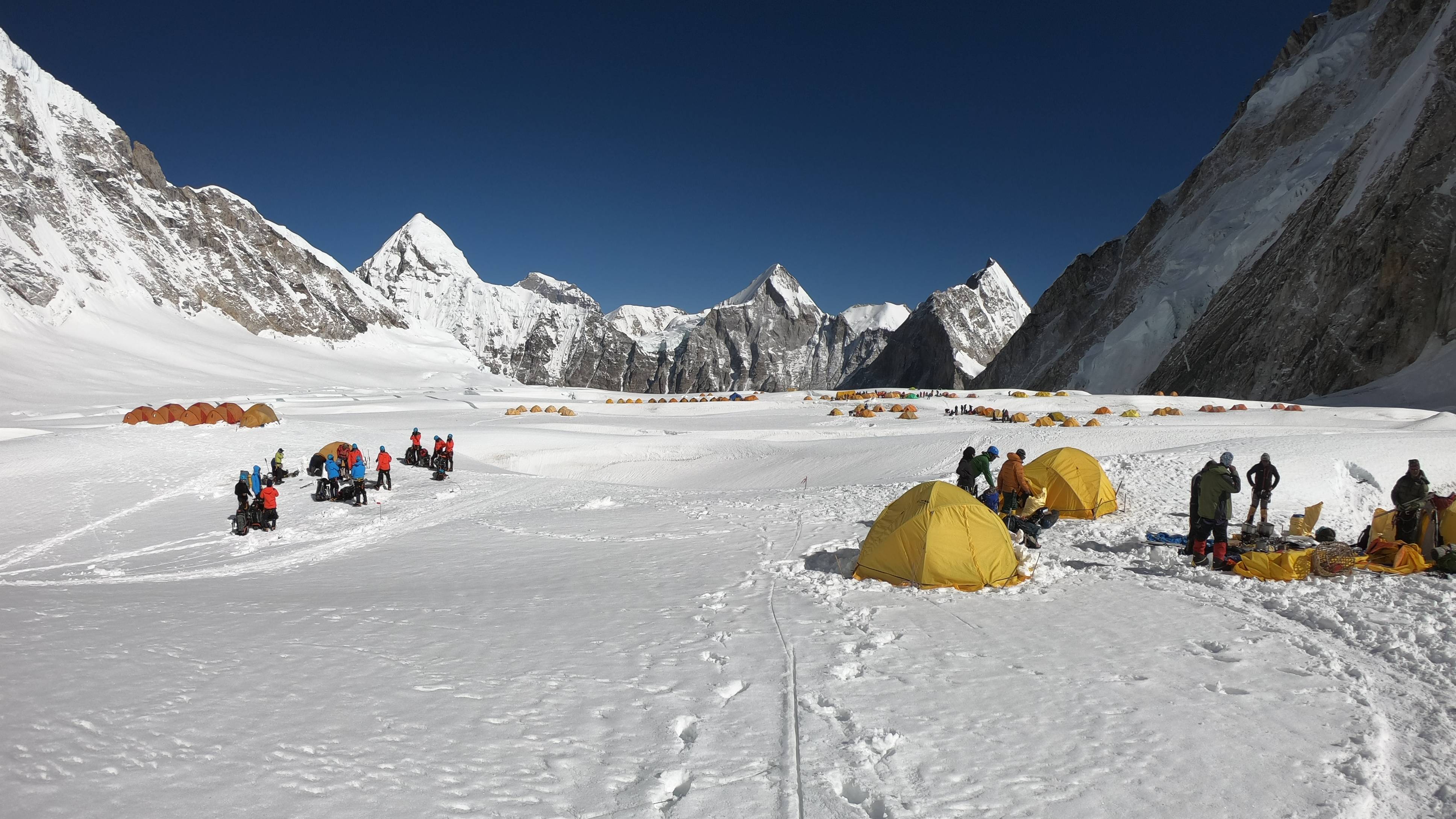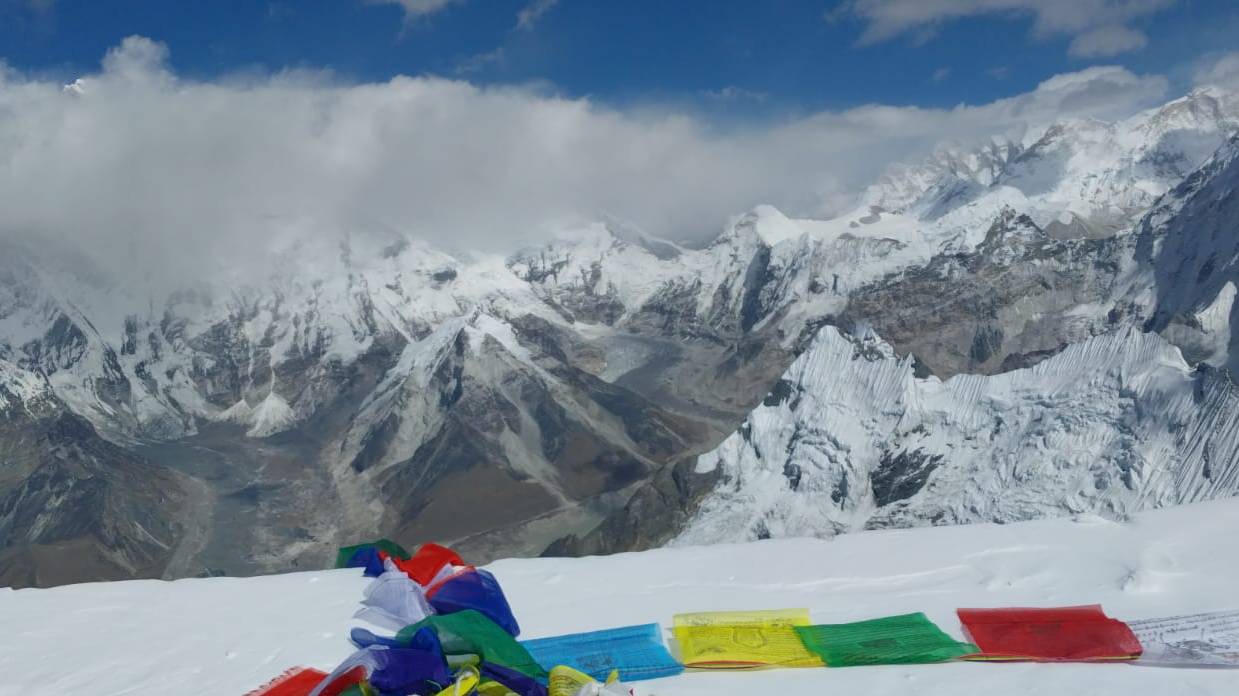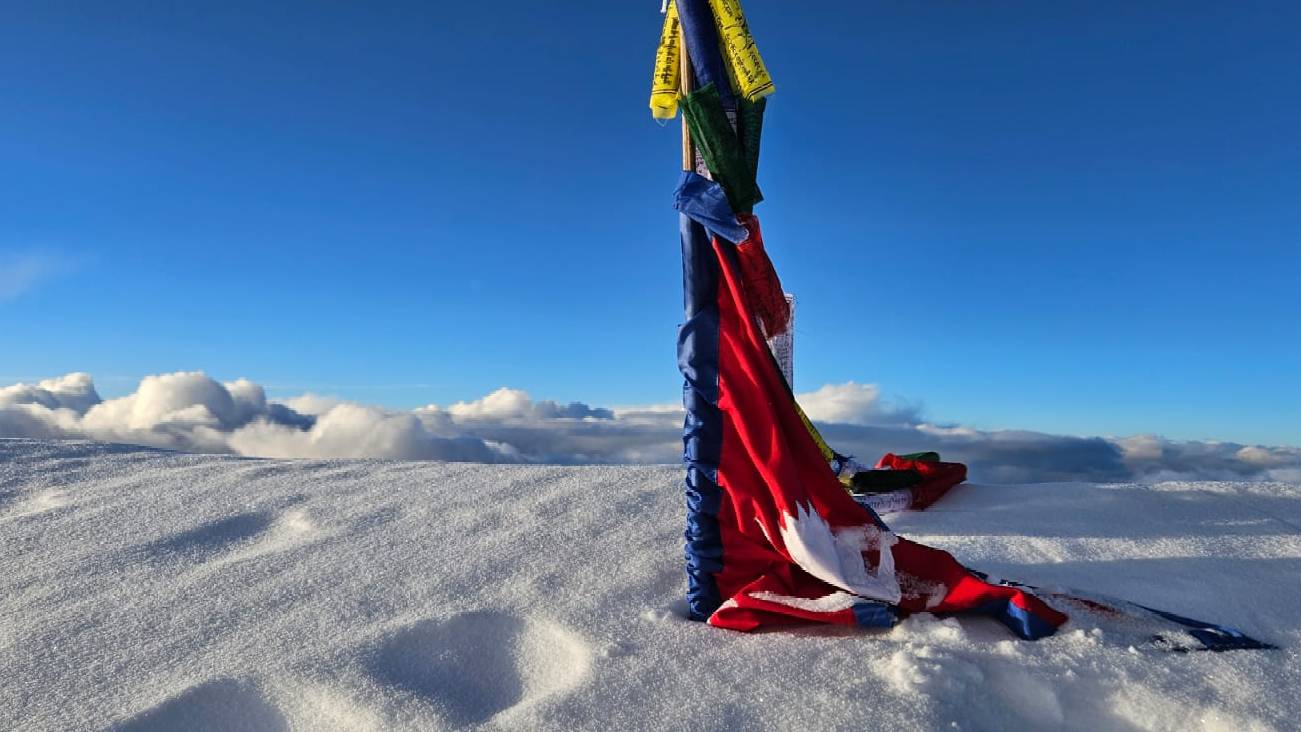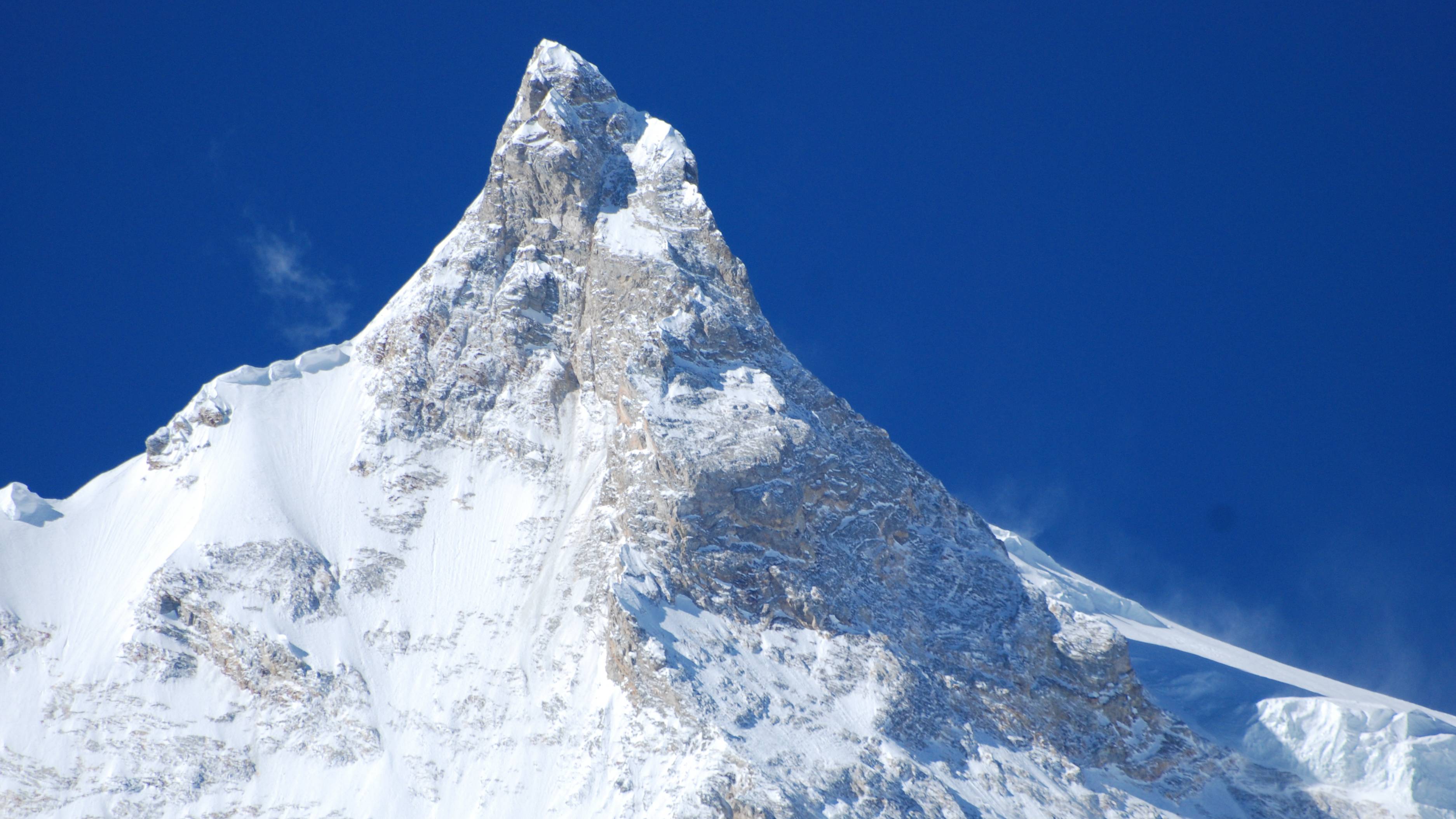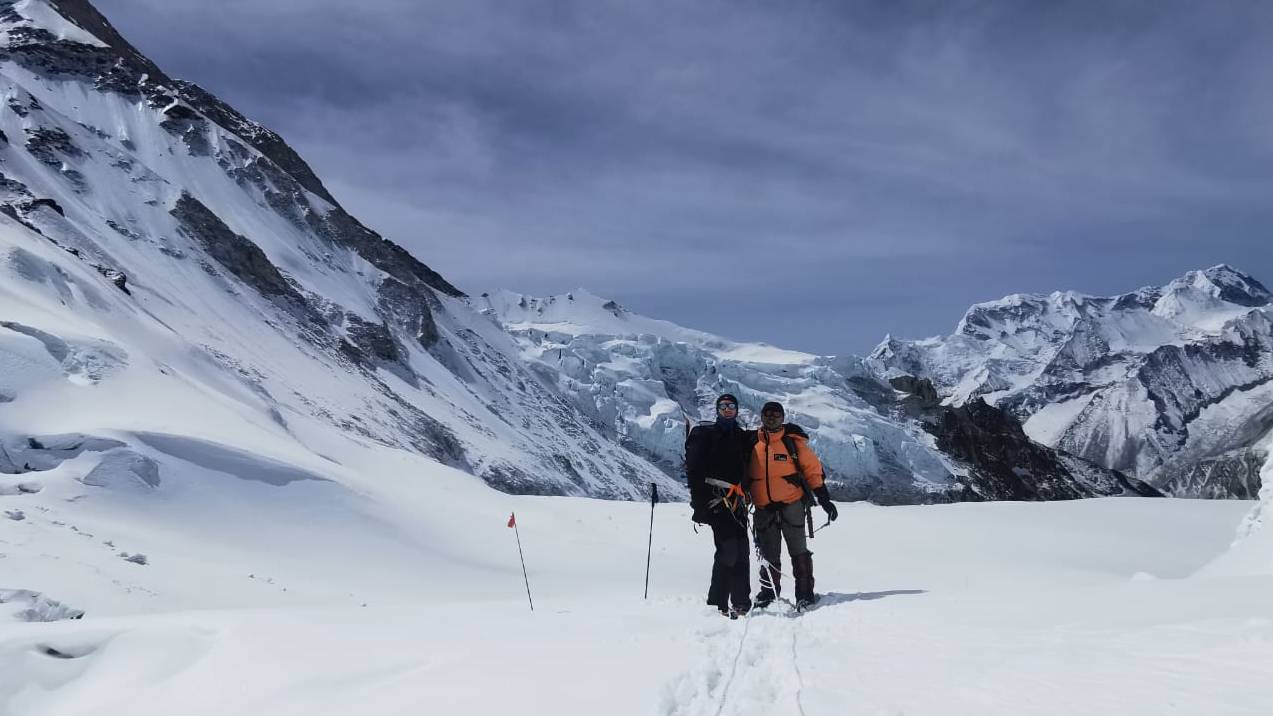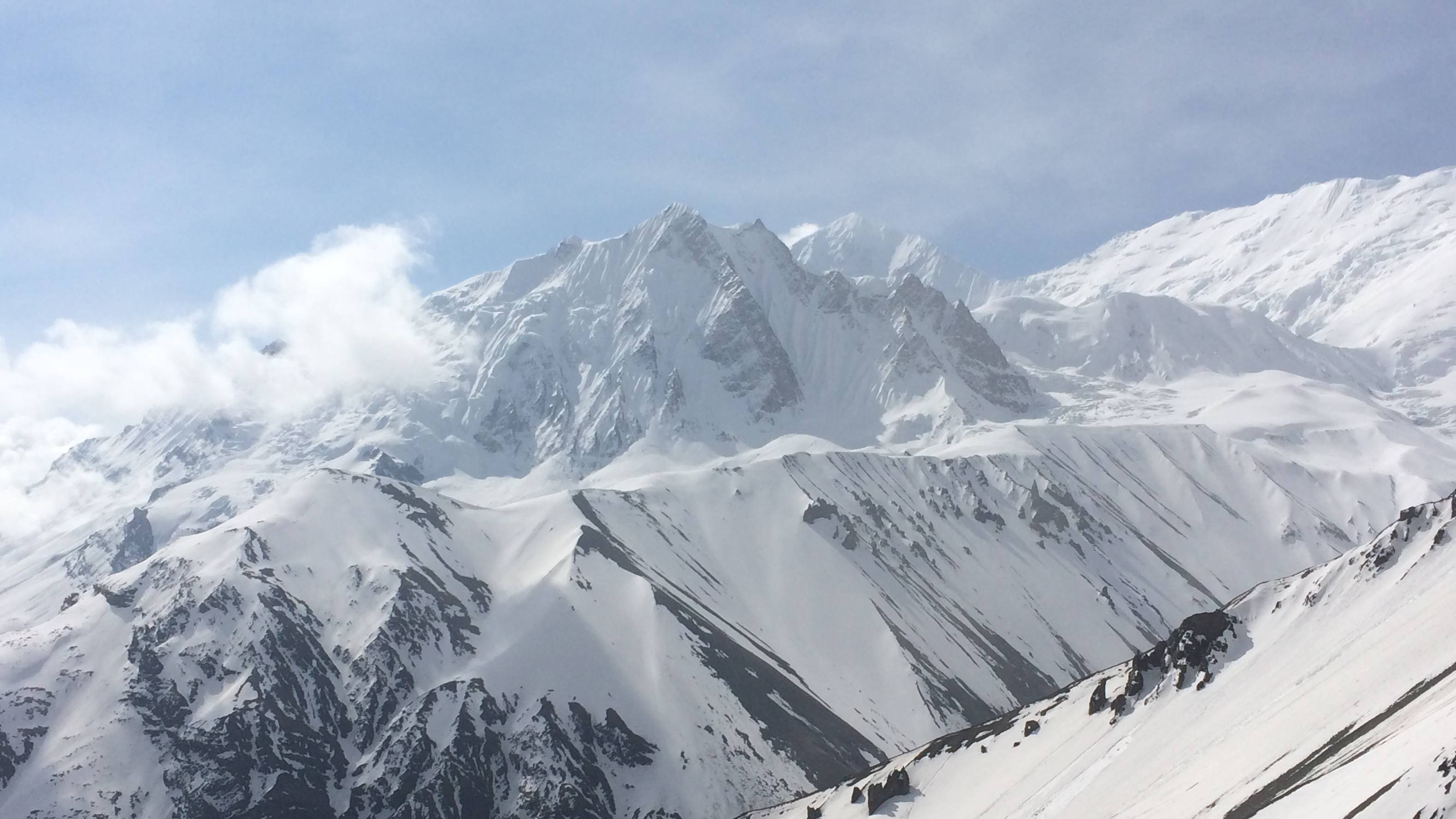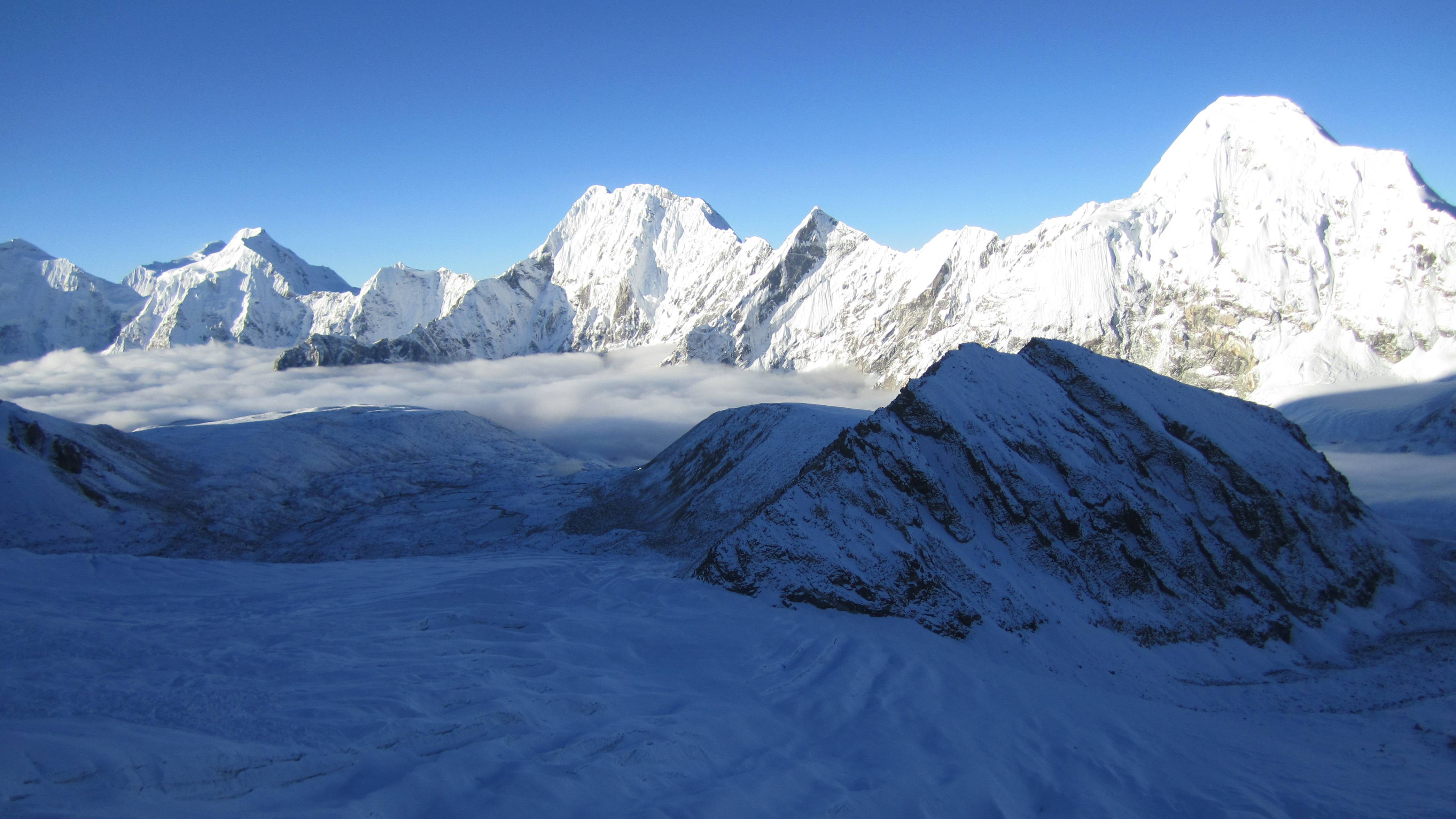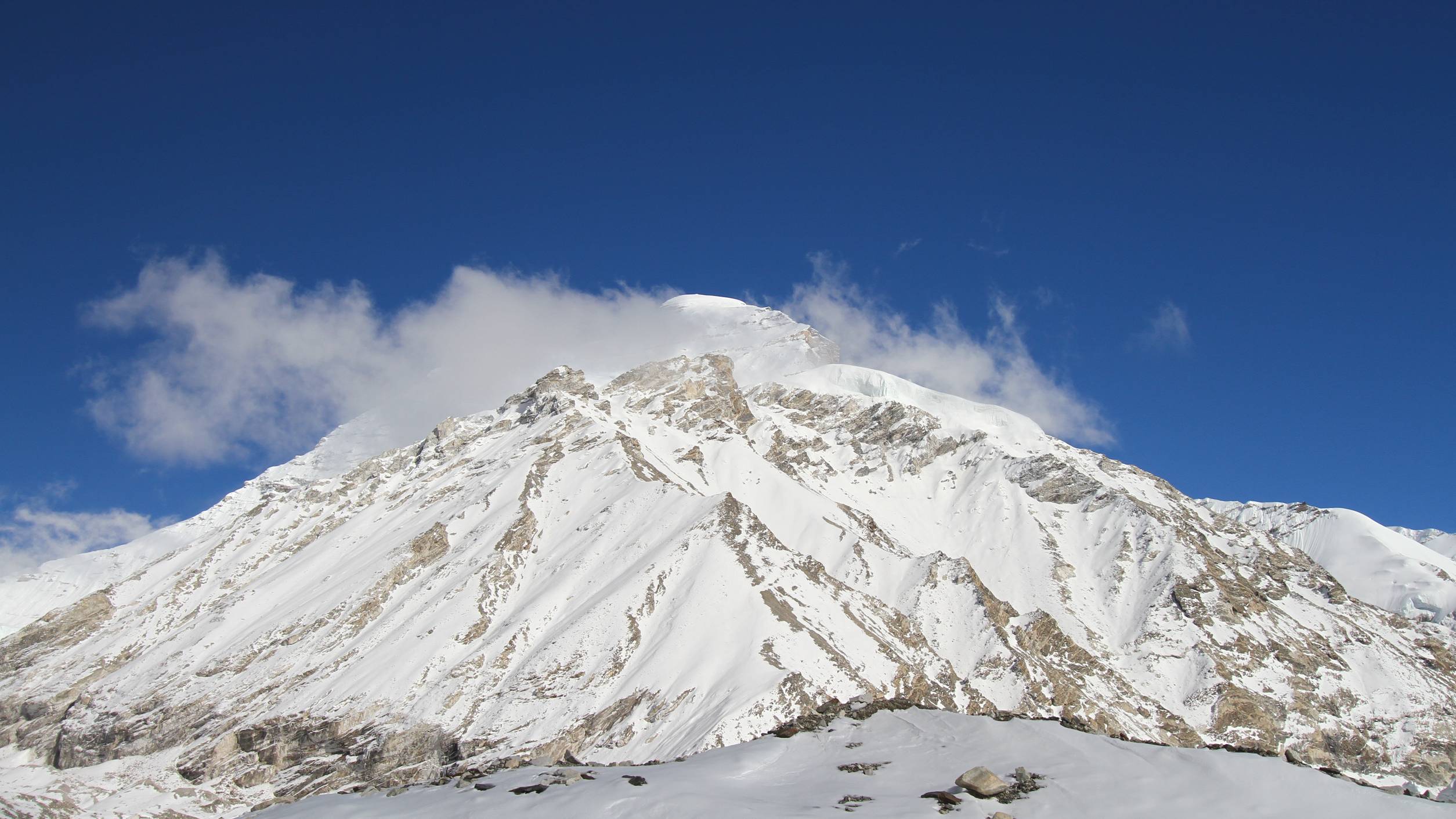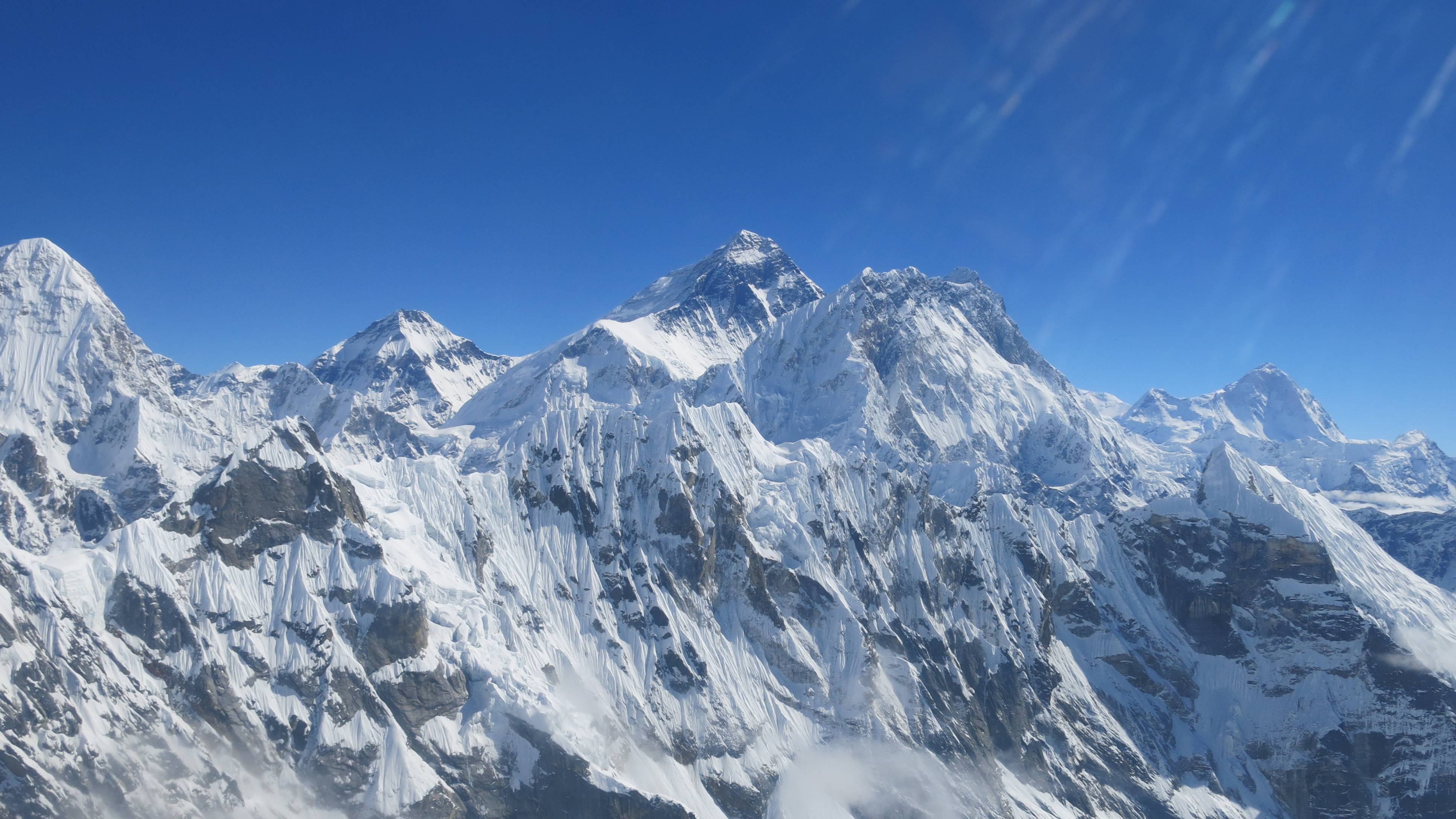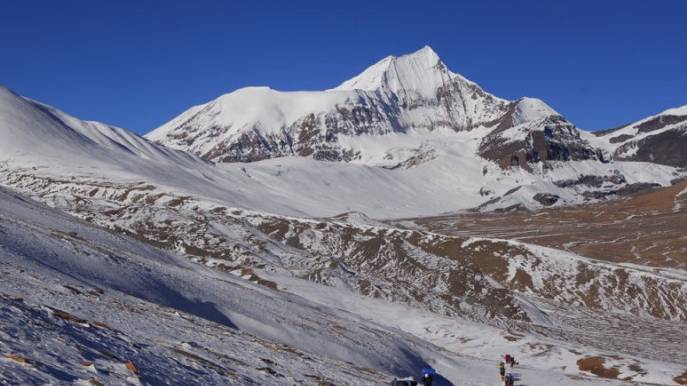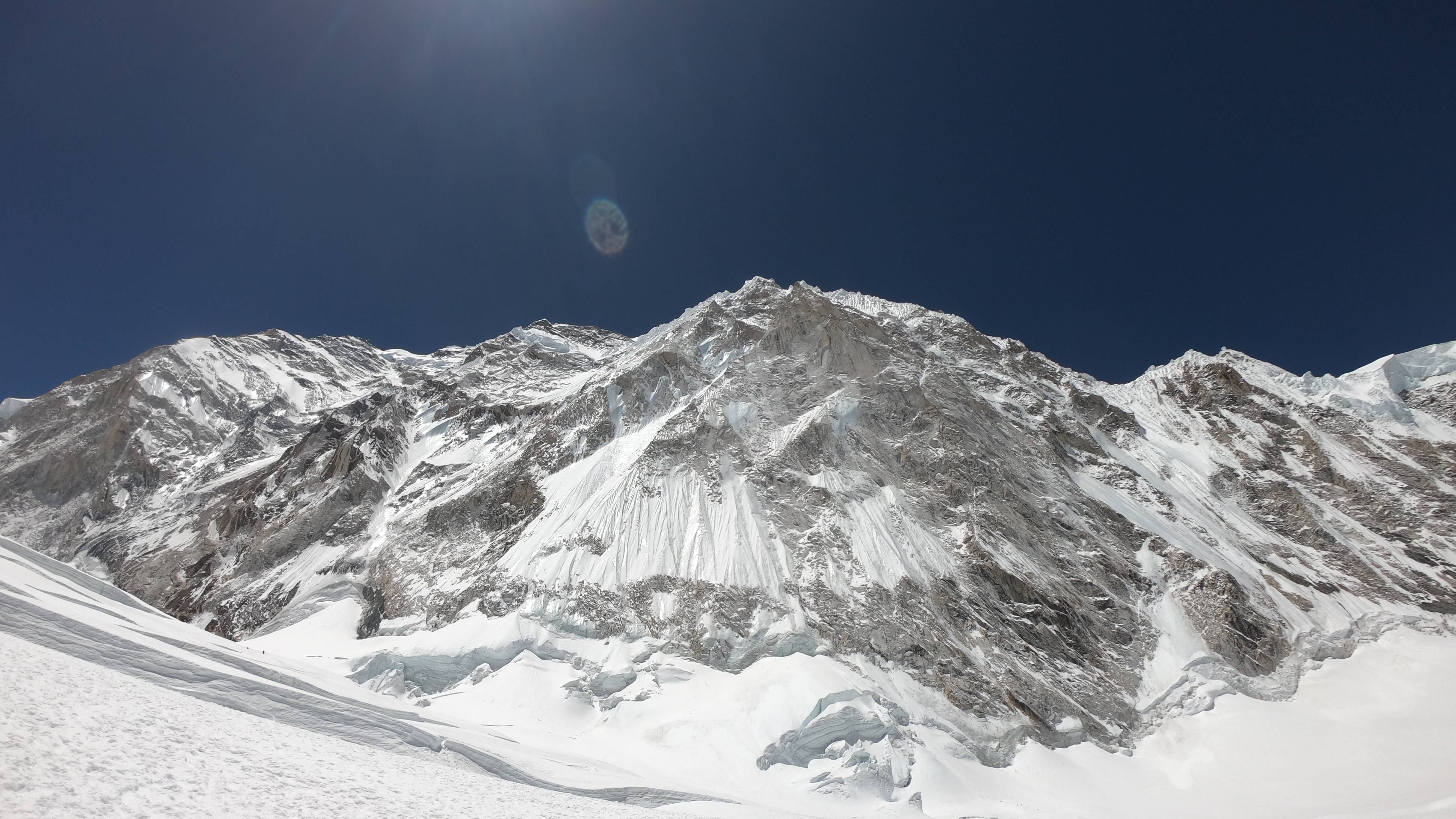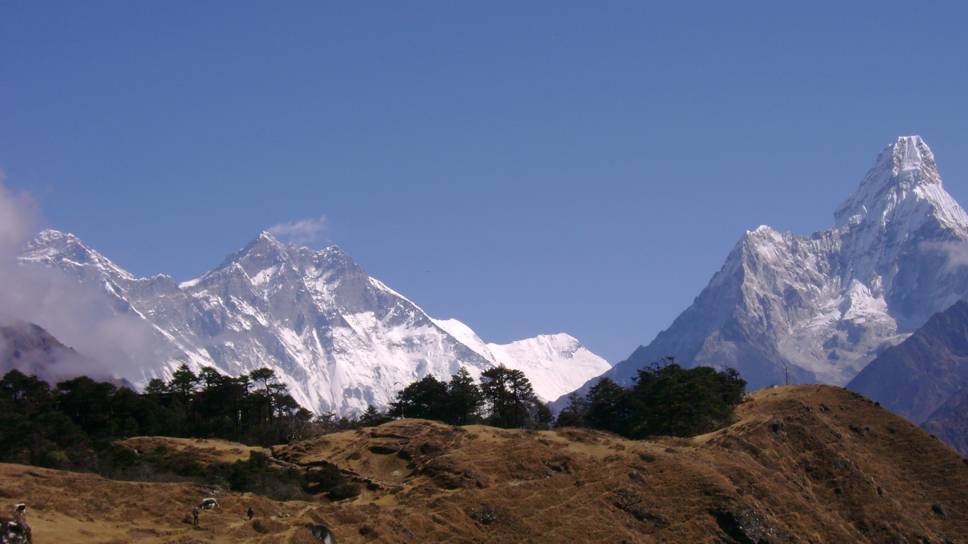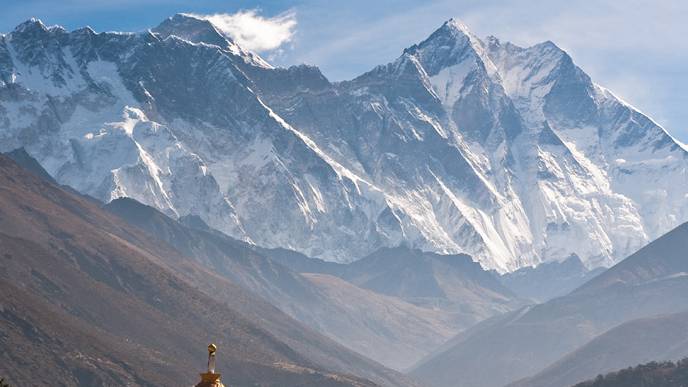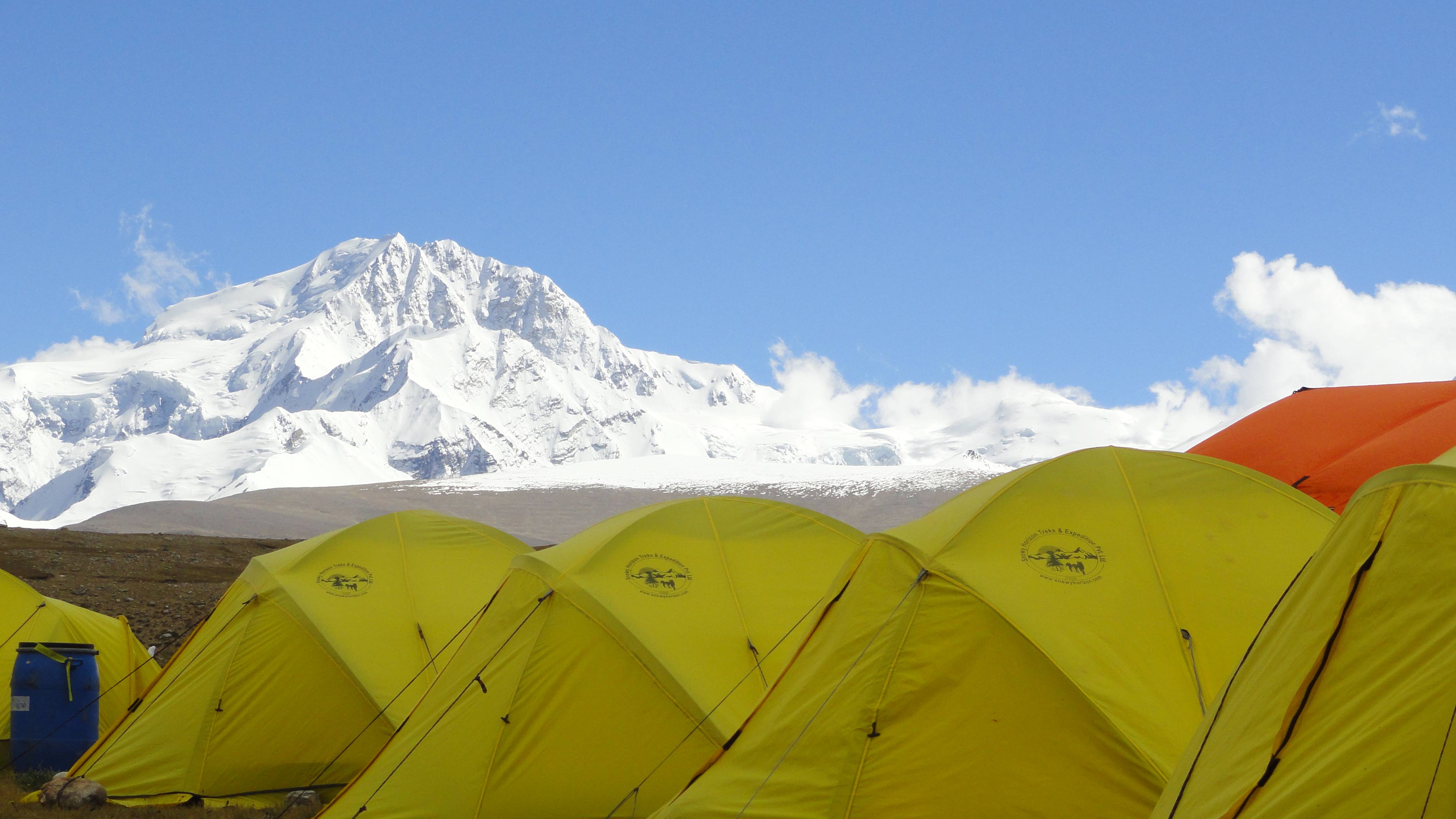Dhaulagiri Expedition
Overview
“Discover the world’s 7th highest mountain located in Western Nepal with the exclusive arrangements of team Snowy Horizon, professional climbing Sherpa and basecamp staffs in Mt. Dhaulagiri (8167m).”
Mt. Dhaulagiri is the 7th highest mountain in the world and 5th in Nepal which is located in the Northwest of Myagdi District in Nepal. “Dhavala” means “White” and “Giri” means “Mountain peak” from Sanskrit is a real giant, which endorses to say the range of White Mountains as Dhavala+giri hereafter called Mt. Dhaulagiri in combined. The real altitude of Mt Dhaulagiri is (8,167m) from sea level. Mt. Dhaulagiri is one of the most formidable peaks to climb. The first successful summit was possible only in 1960 by the Swiss following from the Northeast ridge. This mountain was first sighted by the British surveyors in India in the early 1800s but remained virtually unknown until a Swiss aerial survey in 1949. Five ridges buttress Dhaulagiri l and even up until the early 1980's however only the Northeast ridge had been successfully climbed. Dhaulagiri is considered the most interesting peak among the eight thousand meters mountains in Nepal. In terms of rising above the terrain, Mt. Dhaulagiri is unparalleled as it rises 7000m over Kali Gandaki valley with a horizontal length of 30km, which by any standard is an impressive statistic.
Mt. Dhaulagiri Expedition:
The vast majority of ascents to date have been via the first ascent route, which is the "Normal Route" on the Expedition of Dhaulagiri. However, ascents have been made from almost every direction on this mountain. Dhaulagiri has 5 ridges and south and west faces, which raise about 4000m from their Base Camps, offering opportunities to develop many interesting routes from Italian, Swiss and French camps. There had been over 500 summit ascents and about 70 climbing fatalities on the mountain until 2019 through an unofficial record. One can find the Dhaulagiri Expedition to approach the summit at its first elevation of 8167m, due to its technically challenging routes and lack of big commercial expeditions, one of the most attractive climbing destinations. The expedition can only be organized for seasoned mountaineers who have an interest in this formidable mountain.
Snowy Horizon is pleased to offer our beloved Expedition members to this unforgettable and highly exciting mountain expedition in Mt. Dhaulagiri with the world-class equipped and managed project. We provide a comprehensive service organizing all necessary permits, and climbing documentation, traveling logistics including airfares, ground transportation, porters, and other individual services required by mountaineers. On the track to the ABC, we organize logistics for the provision of all required accommodation and food. Upon request or if previously confirmed we are ready to supply all necessary logistics, rescues, supports, etc. to the climbers included in the Expedition.
Dhaulagiri Expedition Base Camp Service:
- Snowy Horizon Treks & Expedition provides very professional, supportive and friendly mountaineering logistic services from Kathmandu to the ABC as well as during the climb. Our objective is to ensure good quality, supportive, safe, friendly, stress-free and comprehensive service to maximize summit opportunity.
- We provide a comprehensive service organizing all necessary permits, and climbing documentation, traveling logistics including airfares, ground transportation, porters, and other individual services required by mountaineers. On the track to the ABC we organize logistics for the provision of all required accommodation and food.
- Our cook and helpers will prepare and serve three delicious freshly cooked and plentiful meals a day and will ensure that hot and cold drinks are available 24hrs a day.
- We provide spacious expedition quality personal tents for all our clients both with full board or base-camp service only.
- We also provide a dining tent, kitchen tent, toilet and portable shower facilities and tent accommodation for our staff.
- We provide access to communication including satellite telephone and solar panels to charge your batteries.
Dhaulagiri Expedition Full Board Service:
- Snowy Horizon provides a personal tent and food, which will be prepared in high camps by their climbing Sherpa. We provide UHF/VHF handheld radios on the mountain to maintain communications between ABC and high camps.
- We provide a personal climbing Sherpa guide to help the clients to reach the summit. Personal climbing Sherpa will set up camp 1, camp 2 and camp 3 including food provisions, fuel and oxygen and will guide and assist the client on the summit day. There are no commercial expeditions on Dhaulagiri so your climbing Sherpa with the cooperation of other clients climbing Sherpa will set up fixed ropes.
Approaches to ABC (Advance Base Camp):
The approach to the Base Camp is from Pokhara, driving to Beni Bazaar and trekking from there along the Myagdi Khola valley to Darbang and via Bagar, Italy Base Camp to Dhaulagiri Base Camp in Spring and driving from Pokhara to Beni and along Kali Gandaki Valley through Tatopani (1189m), Ghasa (2012m) and Marpha (2667m). After Marpha we start trekking to Yak Kharka (3680m) and the Dhaulagiri Base Camp (4700m) via a hidden valley in autumn. The trek to the Base Camp takes 4 days with an acclimatization day in Hidden Valley. On the way back we trek only 2-3 days to Jomsom (2710m) and take the flight back to Pokhara in both seasons.
Climbing Routes:
- The normal route is via Northeast Ridge, the original route climbed by the Swiss-Austrian expedition in 1960. Typically 4 camps will be set up for the climbing. The Advance Base Camp is established at 5,300m, just to deposit the gear but it will not be used as an overnight camp due to avalanche danger. Hence the Base Camp 4750m will be used as Advance Base Camp for Accommodation and meal purposes.
- Camp 1 will be established at 5,900m on the Col east from the ABC. Along this trail, you will suffer from some avalanche risk as well as crevasses danger. You must be aware of risks and difficulties.
- Camp 2 will be established at 6,400m, which is reached from camp 1 with some steep climbing sections. The ropes shall be fixed and you need some technical climbing experience with the support of your climbing Sherpa. You need 1 technical Ice Axe as usual. When you have a private Sherpa it is not mandatory to take 2 technical Ice Axes. One will work.
- Camp 3 (7400m) will be located towards the west with steep ice and snow climbing along the ridge of the Mountain. Gradually ups and downs will be done several times. You climb towards the East Ridge, where you likely experience strong wind conditions before reaching camp 3. This is the most difficult part of the climb.
- From camp 3 we make a direct push for the summit and return to camp 3 if the conditions will allow us. With difficult conditions, the fallback is to set up bevy at 7,900m to attempt another summit push the next day.
Day-to-Day Itinerary:
09 Sep: Day 01: Pick up from Kathmandu airport and transfer to hotel (1350m).
10 Sep: Day 02: Official formalities and expedition preparation in Kathmandu.
11 Sep: Day 03: Drive from Kathmandu to Pokhara (950m-6 Hrs.); hotel.
12 Sep: Day 04:Drive from Pokhara to Marpha (2670m-8 Hrs.); lodge.
13 Sep: Day 05:Rest and acclimatization (Marpha-Muktinath-Marpha Tour); lodge.
14 Sep: Day 06: Trek from Marpha to Yak Kharka (3680m-7 Hrs.); camping.
15 Sep: Day 07: Trek to Hidden Valley (5080m-6 Hrs.) via Thapa pass; camping.
16 Sep: Day 08: Trek to Dhaulagiri Base Camp (4700m-5 Hrs.) via French pass; camping.
17 Sep-17 Oct: Days 09-39: Climbing Period (Summit Period to Mt. Dhaulagiri 8167m).
18 Oct: Day 40: Dismantling ABC, preparation to returning (Clean Base Camp).
19 Oct: Day 41: Trek to Hidden valley (5080m- 4 Hrs.) via French pass; camping.
20 Oct: Day 42: Trek down Yak Kharka (3680m- 7 Hrs.) via Dhampus pass; camping.
21 Oct: Day 43: Trek to Jomsom (2710m-6 Hrs.) via Marpha; lodge.
22 Oct: Day 44: Fly from Jomsom to Pokhara, (20 minutes,)transfer to hotel.
23 Oct: Day 45: Drive from Pokhara to Kathmandu by tourist bus (7 Hrs.); hotel.
24 Oct: Day 46: D-Briefing and leisure day in Kathmandu; evening farewell dinner.
25 Oct: Day 47: Final departure to your port of destination.
Day-to-Day Itinerary:
06 April: Day 01: Pick up from Kathmandu airport and transfer to hotel.
07 April: Day 02: Official formalities, expedition preparation in Kathmandu.
08 April: Day 03: Drive from Kathmandu to Darbang (920m) for about five hours, camping.
09 April: Day 04: Trek from Darbang to Dharapani, camping.
10 April: Day 05: Trek from Dharapani to Muri, camping.
11 April: Day 06: Trek from Muri to Bagar, camping.
12 April: Day 07: Trek from Bagar to Doban, camping.
13 April: Day 08: Trek from Doban to Sallaghari, camping.
14 April: Day 09: Trek from Sallaghari to Italy base Camp overnight at tent camp.
15 April: Day 10: Trek from Italy base camp to Dhaulagiri Base Camp (4700m).
16 April-14 May: Days 11-39: Climbing Period (Summit Period to Mt. Dhaulagiri 8167m).
15 May: Day 40: Preparation to return (Clean Base Camp).
16 May: Day 41: Trek from Dhaulagiri Base Camp to down Yak Kharka (3680m).
17 May: Day 42: Trek from Yak Kharka to Jomsom (2710m), about six hours, teahouse.
18 May: Day 43: Fly from Jomsom to Pokhara, about 20 minutes, overnight hotel on BB Plan.
19 May: Day 44: Drive from Pokhara to Kathmandu by tourist bus which takes about seven hours.
20 May: Day 45: D-Briefing, Leisure day and shopping in Kathmandu; evening farewell dinner.
21 May: Day 46: Final departure or alternative Join other activities.
Full Board Service Cost : Please contact us by email or call us
Cost Include
- All arrival and departure transfers in Kathmandu.
- 4 Nights in Kathmandu & 2 Nights in Pokhara hotel accommodations on BB Plan.
- Kathmandu-Pokhara-Takam/Marpha and Pokhara Kathmandu land transfers.
- Jomsom-Pokhara flight transfers for climbing members.
- Mt. Dhaulagiri expedition permit (Royalty; US$ 1800/900 for member).
- Government official Liaison Officer for Mt. Dhaulagiri Expedition.
- Annapurna Conservation Area entry permit and TIMs card for members.
- All camping equipment in Advance Base Camp and other camps.
- Food, accommodation and guide during trekking in teahouse/lodge/camp.
- Food during the expedition period cooked by our experienced cook at ABC.
- 1:1 experienced private climbing Sherpa guide for climbing support.
- 2 Oxygen (4 Ltrs.) bottles for climbing members and 1 for Sherpa.
- Mask & regulators 1-set for climbing member and Sherpa.
- Gamow bag at EBC for emergency rescue purposes.
- Baggage allowance carrying by mules/porters up and down to BC: 50 kg.
- Required high-altitude food for climbing members and Sherpa.
- Insurance, wages, meal and allowances for climbing Sherpa and BC staffs.
- Solar panels for light and battery charging in base camp.
- Icefall and rope fixing charges, tents at high camps C1, C2, and C3.
- First Aid medical kits for the Group and the staffs.
- Walkie-talkies & satellite phone for communication (uses charge $ 5 per unit for Sat).
- Office service charges and government taxes levied in Nepal.
- Farewell Dinner & Snowy Horizon Special Gifts.
Cost Exclude
- Lunch and dinner during your stay in Kathmandu except for farewell dinner.
- Items of personal nature like laundry, phone calls and Internet uses.
- Clothing, packing items, personal medical kit, personal trekking/climbing gears.
- Any extra services or products or offers or activities not mentioned in the itinerary.
- Any extra expenses arising out of various/unforeseen situations like natural calamities, landslides, political disturbances, strikes, changes in Government regulations, etc.
- Any additional staff (s) especially required by the climbing member.
- Rescue, repatriation, medicines, medical tests and hospitalization expenses.
- Medical-travel insurance and emergency rescue evacuation if required.
- Airfare of international and domestic flights other than specified.
- Nepal custom duty fees for import of expedition goods if required.
- Summit bonus to the personal climbing Sherpa (Beginning from a minimum of US$ 1200 per summit per Sherpa).
- Tips to base camp staffs (Per climbing member beginning from minimum of US$ 200.00 in total for all)
- Any other item not mentioned in the “The Service Package Excludes” Section.
Base Camp Service Cost : Please contact us by email or call us
Cost Include
- All arrival and departure transfers in Kathmandu.
- Snowy Horizon’s assistance in the airport with its representative.
- 4 nights of hotel accommodations in Kathmandu and 1 Night in Pokhara on BB Plan.
- Kathmandu-Pokhara-Takam/Marpha and Pokhara Kathmandu land transfers.
- Jomsom-Pokhara flight transfers for climbing members.
- Mt. Dhaulagiri expedition permit (Royalty; US$ 1800/900 for member).
- Government official Liaison Officer for Mt. Dhaulagiri Expedition.
- Annapurna Conservation Area entry permit.
- All camping equipment in Advance Base Camp.
- Food and accommodation during trekking in the teahouse or camping.
- Food during camping at ABC (3 Meals a day-tea and coffee) by expedition cook.
- Baggage allowance for trekking to members up and down is 40kg: 30kg by mules.
- TIMS card (Trekker’s Information Management System).
- Wages, equipment, medical and accidental Insurance for Sherpa guide and other staffs.
- Required base camp food for climbing members and all involved staffs.
- Insurance, wages, meal and allowances for the Base Camp staffs.
- Solar panels for light and battery charging in Base Camp.
- First Aid medical kits for the Group and the staffs.
- Satellite phone for communication (uses charge $ 5 per unit).
- Office service charges and government taxes levied in Nepal.
- Farewell Dinner & Snowy Horizon Special Gifts.
Cost Exclude
- Lunch and dinner during your stay in Kathmandu except for farewell dinner.
- Items of personal nature like laundry, phone calls and Internet uses.
- Clothing, packing items, personal medical kit, personal trekking/climbing gears.
- Any extra services or products or offers or activities not mentioned in the itinerary.
- Any extra expenses arising out of various/unforeseen situations like natural calamities, landslides, political disturbances, strikes, changes in Government regulations, etc.
- Climbing Sherpa Guide, high altitude food and tents above ABC (Camp: 1-2- & 3).
- Oxygen bottles and masks and regulators for climbing members.
- Any additional staff (s) especially required by the climbing member.
- Rescue, repatriation, medicines, medical tests, and hospitalization expenses
- Medical-travel insurance and emergency rescue evacuation if required.
- Permits for walkie-talkies & filming if a special camera is used.
- Airfare of international and domestic flights other than specified.
- Nepal custom duty fees for import of expedition goods if required.
- Tips to base camp staffs (Per climbing member beginning from minimum of US$ 200.00 in total for all)
- Any other item not mentioned in the “The Service Package Excludes” Section.
Notes
- Cost defers on Hotel Category for Hotels in Kathmandu.
- The itinerary is changeable and modifiable as per the needs and time frame of the clients.
- The cost will be re-calculated if the itinerary is changed or modified.
- Additional activities may be added as per request with nominal additional cost.
- For any kind of changes please contact us by email or call us.
- Grade: Mountaineering
- Elevation: 8,167m (26,795ft)
- Location: Dhaulagiri Himal
- Coordinates: 27°53′0″ N 87°05′00″ E
- First Ascent: Swiss-Australian team, May 13, 1960
- Season: Late spring (traditionally less hazardous) and autumn
- Duration: 47 days (typically)
- Group Size: 02-15 person per Group

